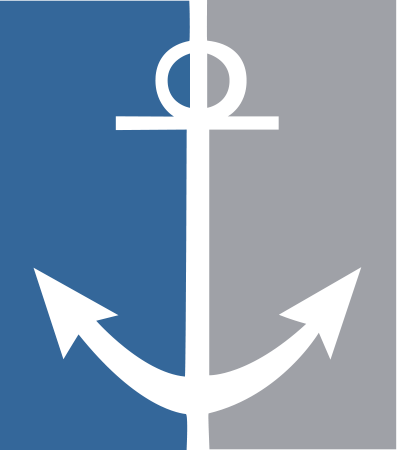Due to years of inadequate funding, the U.S. Army Corps of Engineers has been unable to maintain Great Lakes navigation infrastructure. Over the next five years Great Lakes navigation channels will require $550 million of dredging to maintain authorized channel dimensions. Breakwaters and other federal navigation structures need $768 million in repairs, and the Soo Locks require $300 million in upgrades.
Maintenance activities for coastal and Great Lakes navigation are funded from the Harbor Maintenance Trust Fund (HMTF), which is financed by the Harbor Maintenance Tax – a fee collected from users of the maritime transportation system. Although the tax generates adequate revenue to address the nation’s navigation maintenance needs, over the last two decades Congress has restricted spending due to budgetary constraints. The result has been crumbling infrastructure and harbors choked with sand and silt.
AGLPA Position
The Water Resources Development Act of 2020 provides special budgetary treatment for amounts appropriated from the Harbor Maintenance Trust Fund – up to a cap defined in law. This provision is meant to eliminate budget constraints and allow full use of Harbor Maintenance Tax revenue. It is also meant to spend-down the trust fund’s surplus balance. The cap for FY2025 is the sum of: 1) amounts deposited into the HMTF two fiscal years prior, plus 2) $900 million. This calculation yields a cap of $3.087 billion for FY2025.
As Congress begins work on the FY2025 Energy and Water Development Appropriations Bill, it should fulfill the goals of WRDA2020 and appropriate no less than $3.087 billion from the Harbor Maintenance Trust Fund for the Corps’ coastal navigation operation and maintenance program.
Additional Background
The U.S. Harbor Maintenance Tax (HMT) was enacted by Congress in the Water Resources Development Act of 1986 (P.L. 99-662). The HMT is an “ad valorem” tax, meaning a tax on the value of cargo. Originally, Congress set the HMT at 0.04 percent of the value of cargo carried on ships. In 1990, the tax was increased to 0.125 percent of the value of cargo. The tax is not paid by the vessel owner, nor the port, but rather, by the owner of the cargo in each ship.
While the original tax applied to all cargo transported by ship (with a few exceptions), in 1998 the Supreme Court struck down the taxation of export cargo as unconstitutional. As a result, the Harbor Maintenance Tax is assessed on cargo transported between any two U.S. coastal ports – including Great Lakes ports – and cargo imported to U.S. ports from other countries. The tax is not assessed on export cargo. It is important to note that the Harbor Maintenance Tax is also not assessed on shipments through inland river ports. Congress has enacted a separate user fee for the river barge industry.
The purpose of the HMT is to generate revenue from port users for port and navigation infrastructure maintenance conducted by the U.S. Army Corps of Engineers. Specifically, the Army Corps of Engineers maintains federal shipping channels by conducting periodic dredging. Such dredging is necessary to remove sand and silt that naturally accumulate. In the Great Lakes the Corps of Engineers also engages in additional operation and maintenance activities such as repair of breakwaters and operation of locks.
Harbor Maintenance Tax receipts (currently ~ $2.2 billion/year) are placed in the Harbor Maintenance Trust Fund, which serves as a source of revenue from which Congress appropriates funds for the Corps of Engineers’ maintenance activities. Unfortunately, there is no statutory link between the inflow of tax revenue to the federal government and the outflow of maintenance funds. Tax collections are determined by the volume and value of trade, which has generally grown over the last two decades. Expenditures are determined by the Congressional budget and appropriations process, which has historically been constrained. For this reason, a multi-billion-dollar excess balance has developed in the Harbor Maintenance Trust Fund.
Despite this surplus, Corps of Engineers’ maintenance needs in the Great Lakes region remain inadequately addressed. The Corps estimates that over the next five years Great Lakes navigation channels will require $550 million of dredging to maintain authorized dimensions, breakwaters and jetties need $768 million in repairs, and the two existing navigation locks at Sault Ste Marie, Michigan require $300 million in maintenance. Ports and waterways in other regions of the United States are suffering from a similar lack of maintenance.
To address these infrastructure needs, the Water Resource Development Act of 2020 includes language to provide special budgetary treatment to appropriations from the HMTF. While the law does not force House and Senate appropriators to spend money, it effectively removes any incentive not to. This special budgetary treatment is capped according to a formula in the legislation. Each year, the cap is calculated by adding: 1) HMTF deposits two fiscal years prior + 2) the following amounts:
- in FY2021 $500 million
- in FY2022 $600 million
- in FY2023 $700 million
- in FY2024 $800 million
- in FY2025 $900 million
- in FY2026 $1 billion
- in FY2027 $1.2 billion
- in FY2028 $1.3 billion
- in FY2029 $1.4 billion
- in FY2030 $1.5 billion
This formula should allow Congress to not only spend incoming HMT revenue, but also incrementally spend-down the surplus balance of the trust fund.
Finally, WRDA 2020 also included a key provision to ensure that the Great Lakes region benefits from increased HMTF spending. The law requires that no less than 13% of annual expenditures from the HMTF be directed to maintenance projects in the Great Lakes Navigation System.

